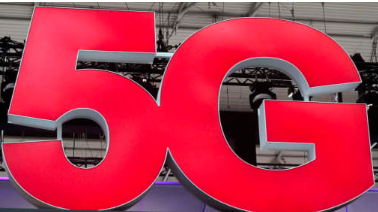5G handsets are coming
Handset manufacturers are on the path to 5G, but when are we going to see high-end phones running 5G in consumer’s hands?

Speaking at Qualcomm’s recent ‘State of Play’ 5G briefing in London last month, Ben Timmons, Senior Director of Business Development at Qualcomm Europe, suggested that while there was considerable PR swirling around 5G, there was a real possibility that we would see the commercial launch of 5G devices as early as Q1 2019.
As recently as June the idea of devices appearing next year and the very ‘idea’ of 5G, “seemed distant,” he said.
However, pointing to ‘real’ activity on the device side and to significant new developments around the issue of interoperability, Timmons now believes that the prospects for the next generation technology were far more “tangible” than had been the case, hitherto.
Timmons said that in order for 5G to become a reality it was crucial that interoperability between technologies, such as Qualcomm’s Snapdragon X50 5G modem and the infrastructure network platforms of vendors, was proven and seen to work.
Qualcomm demonstrated the interoperability of its technology earlier this year at Mobile World Congress. Working with Ericsson and Nokia it had shown, “that the technology we are developing – that was actually going to end up in the device – worked, and would interwork with other infrastructure vendors”.
In June, the wireless networks community had an enormous box ticked with the completion of the 5G new radio (NR) standard.
5G will use different kinds of antennas, operate on different radio spectrum frequencies, connect many more devices to the internet, minimise delays, and deliver ultra-fast speeds, so these latest standard specifications will present some significant challenges for the designers of 5G systems.
“People are committing,” suggested Timmons, “and want to make 5G happen, but there has been a lot of criticism of recent announcements, demos, trials and pilots.”
5G will use higher frequencies, which introduces new complexity that will require different baseband algorithms and radio architectures to contain cost and achieve performance goals. While also achieving power efficiency and linear performance across wide bandwidths in the RF front-end, including power amplifiers that require adaptive DSP techniques such as digital predistortion (DPD), and often must be designed and verified in simulation before the RF hardware is even available.
Qualcomm had been “critical” of early 5G demos which were only based on end-to-end proprietary systems.
“If the network side equipment and device side equipment interoperate, big deal. The thing that is really critical is making sure that my device technology works with someone else’s infrastructure technology and that has always been our focus.”
Central to Qualcomm’s 5G developments has been its 5G test phone, which is powered by the X50 chip.
According to Timmons, while the device is certainly large, although considerably smaller than competitors’ test devices, he hastened to add, it was actually being used by engineers, infrastructure vendors and operators “to test 5G is actually working”.
The test device, along with its X50 chip and the next Snapdragon processor, due to be unveiled shortly, suggest that Qualcomm is on “route to commercialisation”, according to Timmons.
So, when are devices likely to be in the hands of consumers?
“The end of Q1 next year, or the beginning of Q2,” says Timmons. However, he warned that while there may be phones, “It may be there is no network there and operators don’t have launch plans in those timeframes. But in terms of the process that we are going through, in terms of doing interoperability testing with the infrastructure vendors and developing a commercial smartphone, we are on track.”
That will come as a relief to those telecoms companies who are investing in spectrum for 5G.
Financial concerns are palpable. In Italy, after a fiercely fought auction, the Italian government was able to raise €6.5bn from selling the country’s 5G frequencies.
The auction winners, Telecom Italia and Vodafone, each committed to pay about €2.4bn for the largest blocks of spectrum.
“We might not be there yet,” Timmons concluded, “but devices are in factories, being tested and they are working.”
在线留言询价

5G Needs New Approach to Security

Partnership to Develop 5G Base Station Chip

5G: Huawei India CEO says open to provide source code for screening to allay security concerns

US has a 'concerted strategy' to push allies to reject Huawei's 5G equipment: Eurasia Group
- 一周热料
- 紧缺物料秒杀
| 型号 | 品牌 | 询价 |
|---|---|---|
| MC33074DR2G | onsemi | |
| BD71847AMWV-E2 | ROHM Semiconductor | |
| CDZVT2R20B | ROHM Semiconductor | |
| RB751G-40T2R | ROHM Semiconductor | |
| TL431ACLPR | Texas Instruments |
| 型号 | 品牌 | 抢购 |
|---|---|---|
| TPS63050YFFR | Texas Instruments | |
| ESR03EZPJ151 | ROHM Semiconductor | |
| BU33JA2MNVX-CTL | ROHM Semiconductor | |
| IPZ40N04S5L4R8ATMA1 | Infineon Technologies | |
| BP3621 | ROHM Semiconductor | |
| STM32F429IGT6 | STMicroelectronics |
AMEYA360公众号二维码
识别二维码,即可关注
























